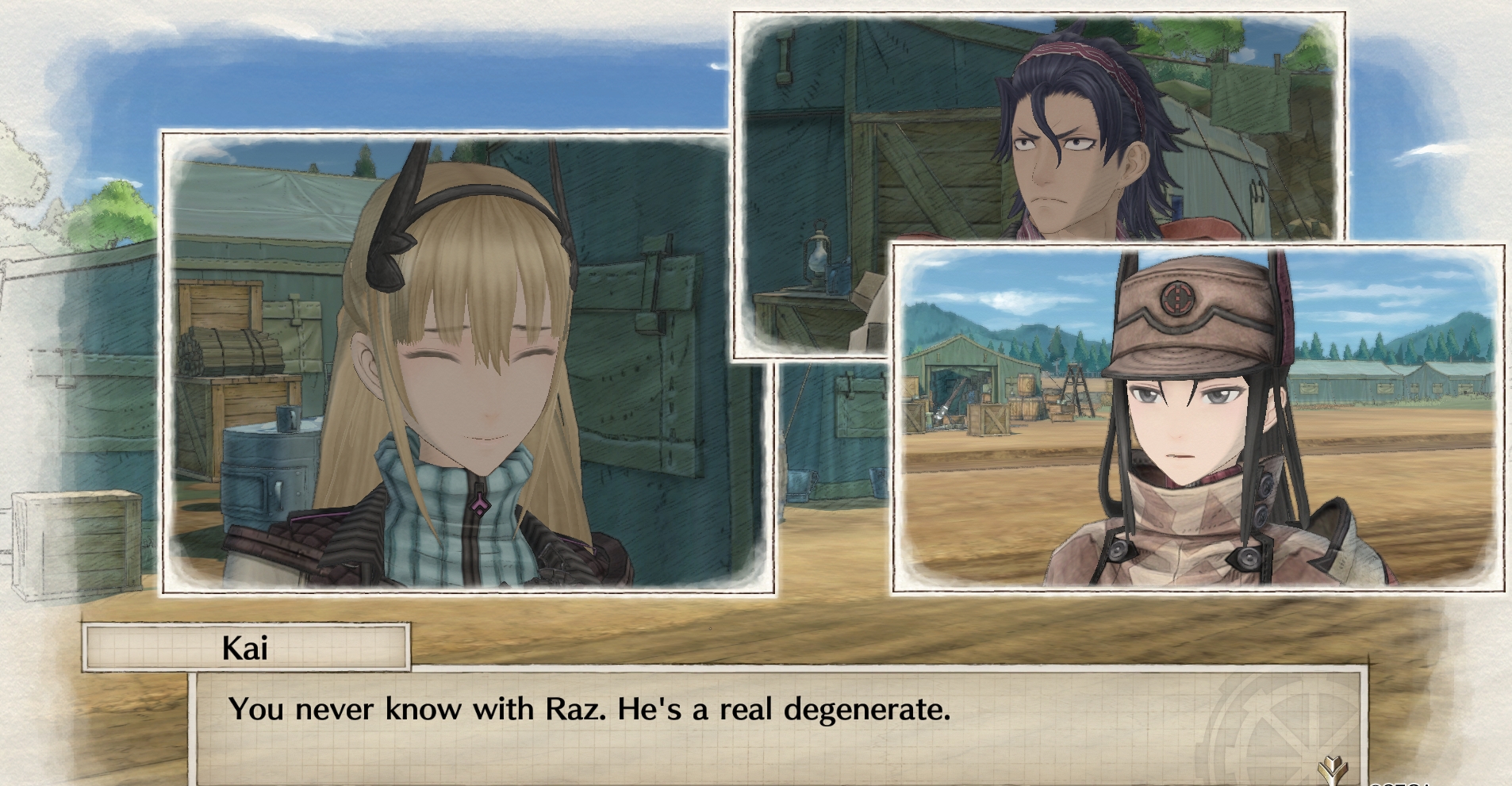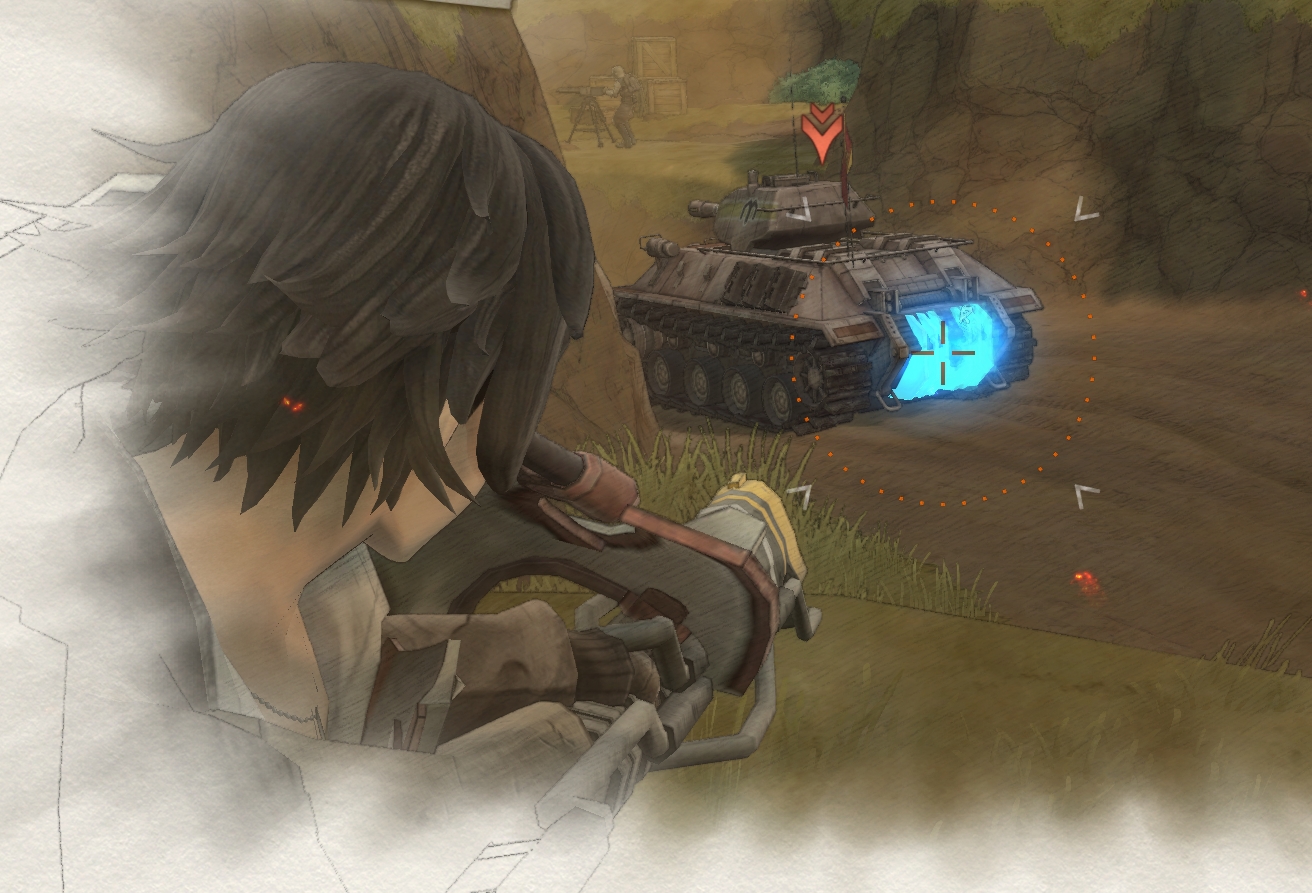Our Verdict
Combines robust storytelling with consistently inventive, surprising missions. Not just a return to form, but a new series peak.
PC Gamer's got your back
What is it? A story-led turn-based wartime strategy game with real-time combat.
Expect to pay £50/$60
Developer Sega CS3
Publisher Sega
Reviewed on Intel Core i5-4440 CPU, 8GB RAM, GeForce GTX 645
Multiplayer? No
Link Official site
For everything it gets right on the battlefield, Valkyria Chronicles 4 is defined at least as much by what it does off of it. For all the narrow escapes, the nervy sorties into uncharted territory, the stressful hold-your-position-at-all-costs defensive missions, it understands that war involves plenty of preparation and a lot of downtime. It captures both the intensity of conflict and the effort (and occasional tedium) of the long hours and days—weeks, even—in between. And all without losing the player’s attention.
Then again, discounting the at-best-misguided console-only offshoot Valkyria Revolution, the series has always managed to find a balance between slow, considered strategising and bursts of exciting action. Each turn begins with you looking down at a tactical map, from which you can spend your limited supply of action points: you’ll either select a soldier to move and fire, or sign an order to buff or heal a frontline unit beyond easy reach. Whether you’re sending a scout ahead for a bit of reconnaissance, launching a brute-force assault with a tank, or flanking the enemy with a sniper or shock trooper, you’re not limited to moving individual units just once. But once they have moved, they’ll be left with less stamina to reposition during subsequent actions. Their meter only resets when a new turn begins.
While you’re moving them, they’re at risk. Should they wander into the sightlines of any enemy units within range, they’ll be fired upon: it’s up to you to dodge the bullets and mortars as best you can, or position them behind cover so they can’t be hit. Once you’ve committed to firing, the incoming barrage will stop, letting you aim your shots precisely, with your chances of success determined by everything from visibility to range to the aiming stat of the weapon you’re using. And, crucially, by individual personality quirks and how they pertain to the current battlefield situation.

These positive and negative character traits have a chance of triggering at any given moment. Take Neige, for example, a timid sniper who suffers from stage fright. Should she wander into a position where she can be spotted by several enemy units at once, she’ll freeze in her tracks, her stamina bar instantly drained. And yet if shock trooper Fleuret is nearby, she might well avoid taking a hit: her eagerness to impress her colleague gives her a boost to her evasiveness.
Some traits might seem a little silly, but it’s remarkable how these idiosyncrasies—combined with exaggerated animations and the odd celebratory cutaway when they take a base or earn a kill—give the units under your command a sense of personality. You might find yourself growing attached to particular troops for the strangest of reasons: despite her shyness, I decided to keep Neige around after a desperate move on the last action of one turn saw her take out a crucial enemy unit with a perfect headshot when she was a single health point from death.
Valkyria Chronicles 4 has enough small refinements to outrank its predecessors.
Render scale (50%-200%, 100%+ applies SSAA), Target framerate (30, 60, 90, 120), Vsync (off/on), Particle quality (low-high), Render distance (low-high), Lod quality (low-high), Shadow quality (low-high), Keep widescreen (off/on), Classic HUD position (off/on)
Squeaky moments like this aren’t uncommon. There’s probably some behind-the-scenes number fiddling that ensures you finish most missions feeling like you survived by the skin of your teeth, or maybe it’s my own risky tactics and determination to leave no soldier behind. The game has a knack of finding ways to keep you on your toes throughout, in fact, whether it’s a change in objective after a certain number of turns, or simply through the mission objectives themselves. The middle section in particular has several standout battles.
One asks you to rescue two units stranded behind enemy lines while keeping your base protected. Another asks you to clear a path through thick snow with Imperial troops approaching from the rear, letting you trigger avalanches that can sweep away several units—including your own if they finish their turn in its path.

Sometimes it’s merely the unusual context that livens things up: in a flashback episode, two units must sneak into a training exercise, shooting targets while remaining unseen to trick their superior into believing that their sniper friend is a crack shot. (They are, it turns out, it’s just that their sights needed adjusting.) The painterly art, meanwhile, makes for an arresting vision of war, and though the violence is sanitised, the story does offer some stark reminders of the consequences of conflict. After encountering a local tradesman selling Imperial goods, your squad later stumbles upon a grim sight showing just how they’ve made an example of him.
It’s a pity that its moments of light relief sometimes strike the wrong note, and that later chapters introduce more far-fetched ideas that sit awkwardly next to the more sober character work. Yet these aren’t ruinous by any means: Valkyria Chronicles 4 has the narrative depth to match its tactical smarts, with enough small refinements to outrank its predecessors.
Combines robust storytelling with consistently inventive, surprising missions. Not just a return to form, but a new series peak.


